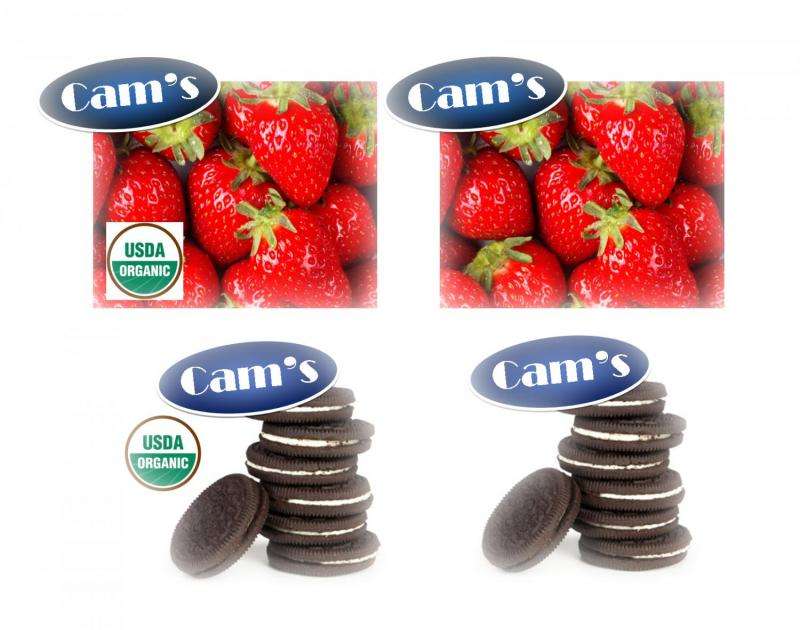Consumer perception of organic foods affected by food type and where they're sold

The organic food industry has grown from fresh produce and grains to snack foods and condiments—from farmers markets to supercenters. Has this new variety in organic products, and the availability of them, affected consumers' perceptions? A University of Illinois researcher and her team designed an experiment to provide insight on some of the variables that may influence opinions about organic foods.
"Past research has often asked how much someone is willing to pay for an organic product, but has rarely considered the context in which that purchase takes place," says U of I food economist Brenna Ellison. "In this study, we look at how the organic label interacts with the product type as well as the retail purchase context."
Ellison and her team conducted an experiment with 605 people who evaluated a food product's expected taste, nutrition, safety, and likelihood of purchase. The products were strawberries and chocolate sandwich cookies sold by a fictitious brand called Cam's. In the experiment, the products were either organic or non-organic and sold in one of two supercenters, Walmart or Target. Each participant only evaluated one of the eight potential combinations.
"We chose strawberries and cookies because they represent a 'virtue' and a 'vice' product, respectively, and both are currently available in the marketplace in organic and non-organic forms," Ellison says. "We chose Target and Walmart because the two stores have similar prices but very different brand images. Target has positioned itself in the marketplace as a store that emphasizes style, design, and aspiration. Walmart, conversely, promotes a low price image."
Results of the study showed that context indeed matters. While organic products were generally rated more highly than non-organic, the researchers found an interesting interaction between the organic label and product type.
"Organic strawberries had higher expected taste ratings than non-organic strawberries, but cookie taste ratings did not differ," Ellison says. "However, the opposite was true with nutrition ratings. Organic cookies were rated as more nutritious - almost twice as healthy - as non-organic cookies, but no difference was observed for strawberry ratings.
"These results suggest that the purchase of organic virtue foods like strawberries may be based more on taste considerations, but organic vice foods like cookies may be purchased based on nutrition considerations," Ellison says.
Another finding from the research was that where the food item was purchased mattered. The researchers concluded that retailers like Target may be better outlets for promoting organic vice products while retailers like Walmart may only be good outlets for promoting organic virtue products.
The study also revealed that participants seemed misinformed about organic standards.
"Even though products carrying the USDA Organic label must contain at least 95 percent organic ingredients by definition, our participants believed organic cookies only contained 62 percent organic ingredients," Ellison says. "This suggests more education may be needed to ensure consumers understand what the organic label means and that this definition does not change across products or stores."
"Putting the organic label in context: Examining the interactions between the organic label, product type, and retail outlet" is published in Food Quality and Preference. It was written by Illinois researchers Brenna Ellison, Brittany Duff, and Tiffany Barnett White and Ph.D. student Zongyuan Wang. The authors note that this research did not receive funding support from any food retailer or manufacturer.
More information: Brenna Ellison et al. Putting the organic label in context: Examining the interactions between the organic label, product type, and retail outlet, Food Quality and Preference (2016). DOI: 10.1016/j.foodqual.2015.11.013
Provided by University of Illinois at Urbana-Champaign
















